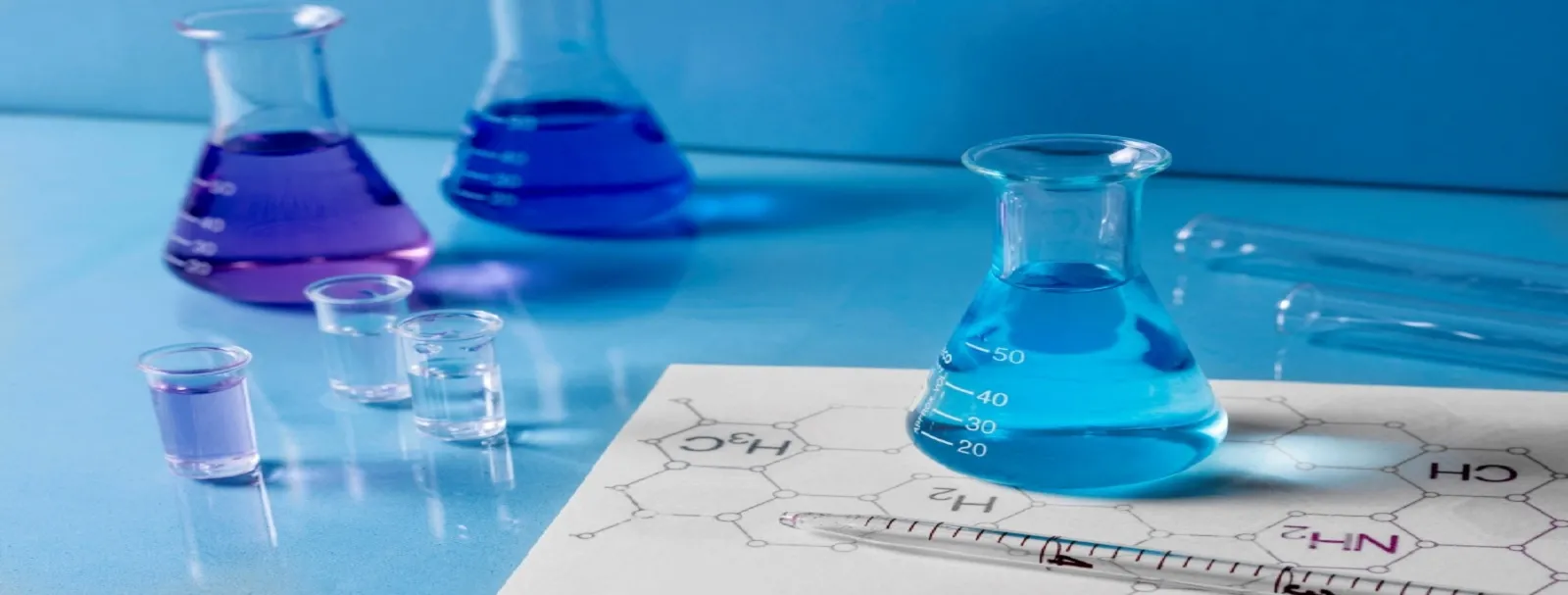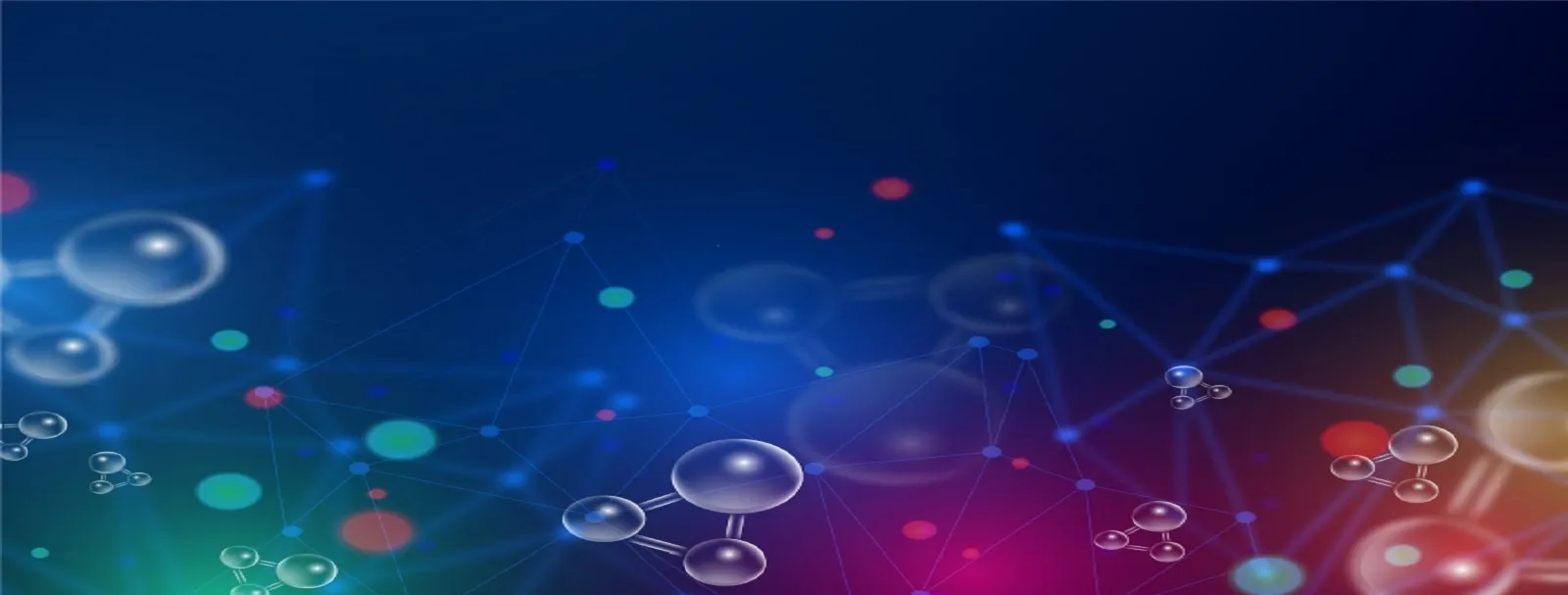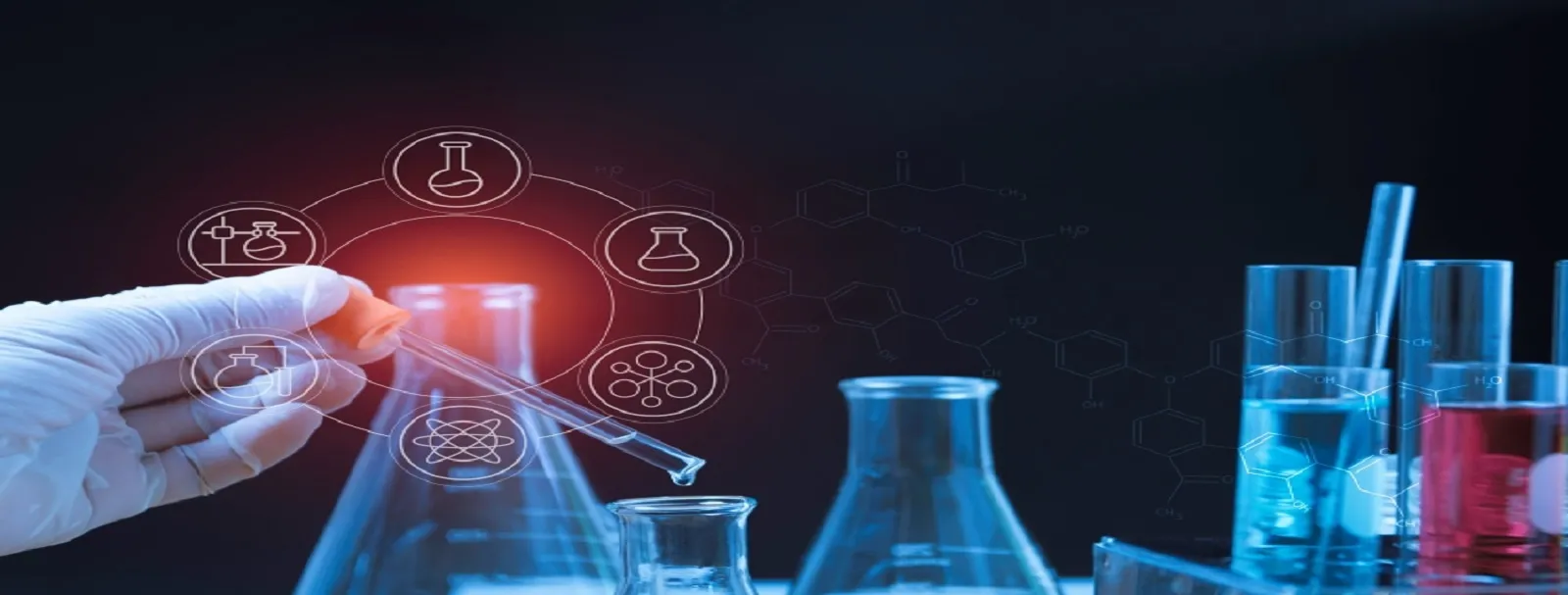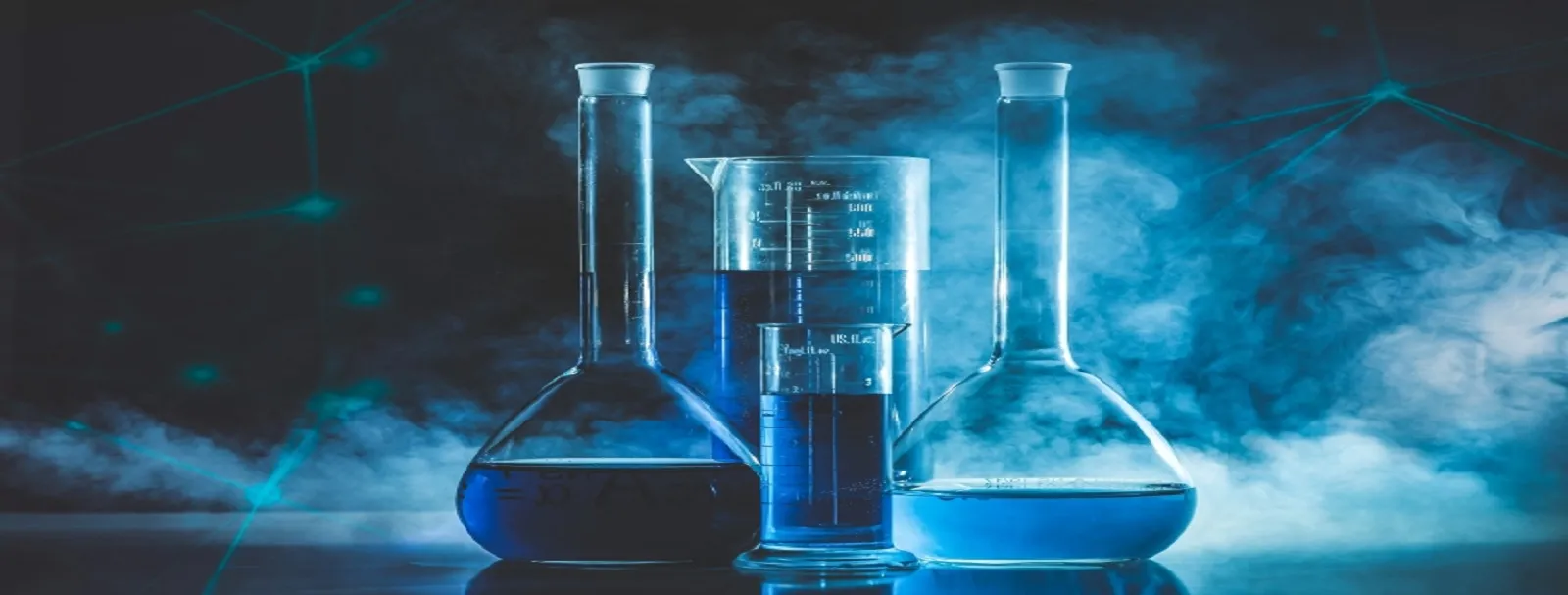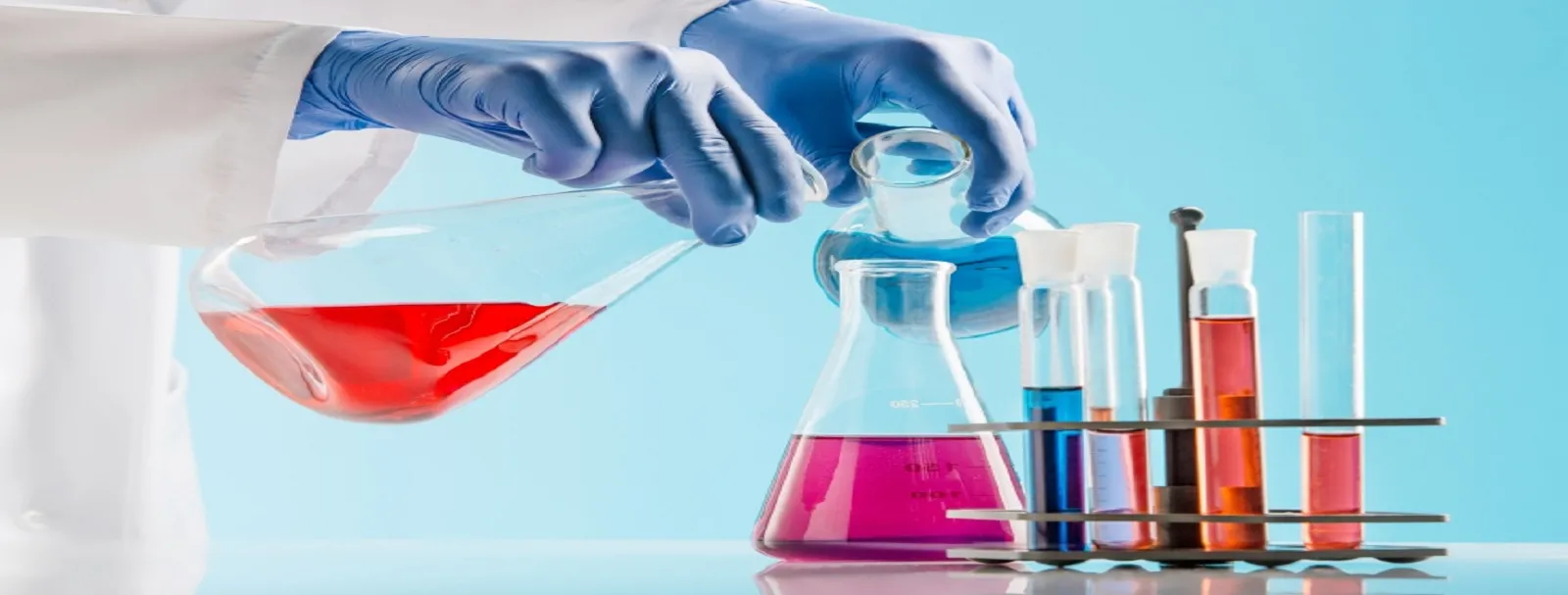Market Outlook
The global Insect Repellent Market size was valued at USD 2189.6 million in 2022 and is forecast to a readjusted size of USD 3115.6 million by 2029 with a CAGR of 5.2% during review period.
Introduction: Why the Insect Repellent Market Matters in 2025
The Insect Repellent Market is rapidly expanding in 2025 as consumers and public health agencies seek effective solutions against mosquito-borne diseases and other insect nuisances. Increasing awareness of diseases like malaria, dengue, and Zika drives demand for repellents across personal care, outdoor, and public health sectors. Innovations in formulations and delivery systems are making repellents safer, longer-lasting, and more user-friendly.
This market is critical for chemical formulators, consumer brands, and health organizations.
Market Drivers: What’s Fueling the Insect Repellent Boom?
Rising Vector-Borne Diseases: Global health concerns boosting preventive measures.
Growing Outdoor Recreation: Increased demand for personal protection products during travel and activities.
Preference for Natural Repellents: Consumers favor plant-based, non-toxic alternatives.
Regulatory Push for Safety: Strict safety standards driving product innovation.
Innovation in Focus: How Repellent Makers Are Leading
Advanced Delivery Systems: Long-lasting sprays, lotions, patches, and wearable devices.
Natural Active Ingredients: Development of essential oil-based repellents with proven efficacy.
Multi-Functional Products: Repellents combined with sunscreen and moisturizers.
Eco-Friendly Packaging: Sustainable materials reducing environmental impact.
Regional Breakdown: Where Demand Is Shifting
Asia-Pacific: High demand due to tropical climate and disease prevalence.
North America and Europe: Growing outdoor lifestyles and travel fueling market growth.
Latin America & MEA: Public health initiatives driving repellent use.
Strategic Considerations: How to Compete in 2025
Invest in R&D: Develop formulations balancing efficacy and skin safety.
Educate Consumers: Promote correct use and benefits through targeted campaigns.
Expand Product Portfolio: Offer diverse formats catering to different consumer preferences.
Strengthen Distribution: Penetrate emerging markets with affordable, effective repellents.
Conclusion: The Insect Repellent Market - Shielding People Against Vector Threats
In 2025, the insect repellent market is poised for sustained growth. Brands prioritizing innovation and consumer trust will thrive.
Key Market Players
SC Johnson
Reckitt Benckiser
3M
Spectrum Brands
Godrej
Konda
Avon
Coleman
Tender Corporation
Cheerwin
Sawyer Products
Segmentation By Type
Body Worn Insect Repellent
Non-body Worn Insect Repellent
Segmentation By Application
Special Population
General Population
Segmentation By Region
North America (United States, Canada and Mexico)
Europe (Germany, France, United Kingdom, Russia, Italy, and Rest of Europe)
Asia-Pacific (China, Japan, Korea, India, Southeast Asia, and Australia)
South America (Brazil, Argentina, Colombia, and Rest of South America)
Middle East & Africa (Saudi Arabia, UAE, Egypt, South Africa, and Rest of Middle East & Africa)
Market SWOT Analysis
What are the strengths of the Insect Repellent Market in 2025?
The rising awareness of health risks related to insect-borne diseases, along with the growing demand for personal care products, ensures strong and expanding demand for insect repellents.
What are the weaknesses of the Insect Repellent Market in 2025?
Concerns over the safety and effectiveness of certain chemical insect repellents, combined with regulatory pressures, may limit their use in some markets.
What are the opportunities for the Insect Repellent Market in 2025?
Increasing global travel, urbanization, and rising health concerns regarding diseases like malaria and dengue provide ample opportunities for growth in the insect repellent market.
What are the threats to the Insect Repellent Market in 2025?
Competition from natural and organic insect repellents and the introduction of stricter regulations on chemical ingredients could challenge the market's growth.
Market PESTEL Analysis
How do political factors impact the Insect Repellent Market in 2025?
Government policies regarding public health and environmental safety, particularly those related to the regulation of chemicals used in insect repellents, influence the market. Political decisions regarding the approval of active ingredients, as well as trade restrictions on raw materials, impact the availability and pricing of insect repellents.
What economic factors affect the Insect Repellent Market in 2025?
Economic conditions in the personal care, outdoor activities, and tourism sectors drive the demand for insect repellents. Increasing disposable incomes, particularly in emerging markets, lead to higher spending on personal care and wellness products, influencing the growth of the insect repellent market.
How do social factors shape the Insect Repellent Market in 2025?
Rising concerns about the spread of vector-borne diseases, such as malaria and dengue fever, drive the adoption of insect repellents in both developed and developing regions. Social trends favoring natural and organic products also encourage the development of plant-based and environmentally friendly insect repellent alternatives.
What technological factors are relevant to the Insect Repellent Market in 2025?
Technological advancements in the formulation of longer-lasting, more effective insect repellents, including innovative delivery systems such as sprays, lotions, and wearable devices, contribute to market growth. Research into new, non-toxic active ingredients also drives the evolution of the market.
What environmental factors influence the Insect Repellent Market in 2025?
Environmental concerns regarding the use of synthetic chemicals and their impact on ecosystems and biodiversity push the development of more sustainable, eco-friendly insect repellent options. Regulations limiting the use of certain harmful ingredients in repellents also influence the market's direction toward safer alternatives.
How do legal factors impact the Insect Repellent Market in 2025?
Legal regulations governing the safety, efficacy, and labeling of insect repellents, particularly regarding the approval of active ingredients and consumer safety standards, influence the market. Intellectual property rights for new formulations and patents for unique delivery systems also play a role in shaping market competition.
Market SIPOC Analysis
Who are the suppliers in the Insect Repellent Market 2025?
Suppliers include chemical manufacturers producing active insect repellent ingredients, natural product suppliers, and companies specializing in the development of consumer insect repellent products for personal care and outdoor protection.
What are the inputs in the Insect Repellent Market 2025?
Inputs include active ingredients like DEET, picaridin, and essential oils (such as citronella), along with formulations, packaging materials, and testing for safety and effectiveness.
What processes are involved in the Insect Repellent Market 2025?
Processes include the formulation of insect repellents using active ingredients, blending with carriers or emollients, testing for efficacy, and packaging for retail distribution as sprays, lotions, or wearable products.
Who are the customers in the Insect Repellent Market 2025?
Customers include outdoor enthusiasts, travelers, personal care product manufacturers, and consumer goods companies offering insect protection solutions for markets in regions with high mosquito and pest populations.
What are the outcomes in the Insect Repellent Market 2025?
Outcomes include increased demand for natural and DEET-free insect repellents, growth in outdoor leisure and travel markets, and rising concerns over vector-borne diseases driving the demand for effective repellents.
Market Porter's Five Forces
What is the threat of new entrants in the Insect Repellent Market in 2025?
The threat of new entrants is moderate. While entering the insect repellent market may not require significant capital investment, established brands have strong customer loyalty, and new entrants face challenges related to regulatory approval and product differentiation.
What is the bargaining power of suppliers in the Insect Repellent Market in 2025?
The bargaining power of suppliers is low to moderate. Ingredients used in insect repellents, such as DEET or natural oils, are sourced from various suppliers, allowing manufacturers to choose from different suppliers, which reduces the power of any single supplier.
What is the bargaining power of buyers in the Insect Repellent Market in 2025?
The bargaining power of buyers is high. With a variety of insect repellent products available in the market, from chemical to natural options, consumers can easily switch between brands, giving them significant leverage over pricing.
What is the threat of substitute products in the Insect Repellent Market in 2025?
The threat of substitutes is moderate. While other preventive measures such as mosquito nets and insect traps can act as substitutes, repellents remain the most convenient and effective solution, reducing the impact of substitutes.
What is the intensity of competitive rivalry in the Insect Repellent Market in 2025?
The intensity of competitive rivalry is high. With increasing demand for both chemical and natural insect repellents, companies are focusing on product innovation, effectiveness, and eco-friendly ingredients, which leads to intense competition.
Market Upstream Analysis
What are the key raw materials in the Insect Repellent Market in 2025?
Key raw materials for insect repellents include active ingredients like DEET (N,N-diethyl-meta-toluamide), picaridin, and essential oils such as citronella and eucalyptus, which are combined with solvents and stabilizers to create effective formulations.
What role do suppliers play in the Insect Repellent Market in 2025?
Suppliers provide active ingredients, solvents, and formulation technologies required to create insect repellent products. They play a critical role in ensuring that repellents are effective, safe for use, and compliant with safety regulations, especially in consumer products.
How does the regulatory environment affect upstream factors in this market?
Regulations regarding the safety of active ingredients, such as DEET and citronella, as well as the environmental impact of repellents, affect production and distribution. Suppliers must ensure their products comply with regulatory standards for safety, toxicity, and environmental protection.
What technological advancements influence upstream production in the Insect Repellent Market in 2025?
Advancements in formulation technologies are making insect repellents more effective and longer-lasting, with innovations in controlled-release mechanisms and more natural, plant-based ingredients. There is also a growing demand for more environmentally friendly and skin-safe products.
What challenges do upstream suppliers face in this market?
Suppliers face challenges related to the safety and efficacy of active ingredients, ensuring compliance with varying global regulations, and responding to consumer demand for more sustainable and less harmful insect repellent alternatives.
Market Midstream Analysis
What are the key processes involved in the midstream of the Insect Repellent Market in 2025?
The key processes involve the production of insect repellents through chemical synthesis or natural extraction, followed by formulation, packaging, and distribution to consumer markets, including retail outlets and online platforms.
How do manufacturers contribute to the Insect Repellent Market in 2025?
Manufacturers focus on producing insect repellents that are effective, safe, and consumer-friendly, using ingredients like DEET, picaridin, and natural plant-based extracts to meet the diverse needs of personal protection and pest control.
What is the role of packaging in the midstream of this market?
Packaging ensures that insect repellents remain effective and safe for use by preventing contamination, leakage, and degradation, while also providing clear instructions for application and ensuring the products are easily transported to retail shelves.
What challenges do companies face in the midstream of this market?
Challenges include maintaining the stability and efficacy of active ingredients, managing consumer safety concerns, addressing regulatory requirements for different regions, and responding to growing demand for eco-friendly and non-toxic alternatives.
How do distribution channels affect the Insect Repellent Market in 2025?
Distribution channels are key in ensuring that insect repellents reach consumers in regions with high demand, such as tropical areas and places with seasonal insect outbreaks, through both retail stores and online sales platforms.
Market Downstream Analysis
What are the key consumer segments in the Insect Repellent Market in 2025?
Key consumers include the personal care industry for skincare and protection products, the outdoor recreational sector for camping and hiking gear, and the healthcare industry for products used in mosquito-borne disease prevention.
What role do distributors and suppliers play in the Insect Repellent Market in 2025?
Distributors and suppliers provide insect repellents to retail outlets, e-commerce platforms, and healthcare providers, ensuring a wide range of products that meet consumer preferences for natural, DEET-free, or long-lasting repellents.
What challenges do companies face in the downstream market of this industry?
Challenges include ensuring the efficacy and safety of insect repellents, managing consumer concerns regarding chemical-based formulations, and responding to growing demand for natural and sustainable alternatives in repellent products.
How does consumer feedback influence the Insect Repellent Market in 2025?
Consumer feedback drives the development of more eco-friendly, non-toxic insect repellents, prompting innovations in formulations that offer better protection, longer-lasting effects, and reduced environmental impact.
Chapter 1, to describe Insect Repellent product scope, market overview, market estimation caveats and base year.
Chapter 2, to profile the top manufacturers of Insect Repellent, with price, sales, revenue and global market share of Insect Repellent from 2018 to 2023.
Chapter 3, the Insect Repellent competitive situation, sales quantity, revenue and global market share of top manufacturers are analyzed emphatically by landscape contrast.
Chapter 4, the Insect Repellent breakdown data are shown at the regional level, to show the sales quantity, consumption value and growth by regions, from 2018 to 2029.
Chapter 5 and 6, to segment the sales by Type and application, with sales market share and growth rate by type, application, from 2018 to 2029.
Chapter 7, 8, 9, 10 and 11, to break the sales data at the country level, with sales quantity, consumption value and market share for key countries in the world, from 2017 to 2022.and Insect Repellent market forecast, by regions, type and application, with sales and revenue, from 2024 to 2029.
Chapter 12, market dynamics, drivers, restraints, trends, Porters Five Forces analysis, and Influence of COVID-19 and Russia-Ukraine War.
Chapter 13, the key raw materials and key suppliers, and industry chain of Insect Repellent.
Chapter 14 and 15, to describe Insect Repellent sales channel, distributors, customers, research findings and conclusion.
1 Market Overview
1.1 Product Overview and Scope of Insect Repellent
1.2 Market Estimation Caveats and Base Year
1.3 Market Analysis by Type
1.3.1 Overview: Global Insect Repellent Consumption Value by Type: 2018 Versus 2022 Versus 2029
1.3.2 Body Worn Insect Repellent
1.3.3 Non-body Worn Insect Repellent
1.4 Market Analysis by Application
1.4.1 Overview: Global Insect Repellent Consumption Value by Application: 2018 Versus 2022 Versus 2029
1.4.2 Special Population
1.4.3 General Population
1.5 Global Insect Repellent Market Size & Forecast
1.5.1 Global Insect Repellent Consumption Value (2018 & 2022 & 2029)
1.5.2 Global Insect Repellent Sales Quantity (2018-2029)
1.5.3 Global Insect Repellent Average Price (2018-2029)
2 Manufacturers Profiles
2.1 SC Johnson
2.1.1 SC Johnson Details
2.1.2 SC Johnson Major Business
2.1.3 SC Johnson Insect Repellent Product and Services
2.1.4 SC Johnson Insect Repellent Sales Quantity, Average Price, Revenue, Gross Margin and Market Share (2018-2023)
2.1.5 SC Johnson Recent Developments/Updates
2.2 Reckitt Benckiser
2.2.1 Reckitt Benckiser Details
2.2.2 Reckitt Benckiser Major Business
2.2.3 Reckitt Benckiser Insect Repellent Product and Services
2.2.4 Reckitt Benckiser Insect Repellent Sales Quantity, Average Price, Revenue, Gross Margin and Market Share (2018-2023)
2.2.5 Reckitt Benckiser Recent Developments/Updates
2.3 3M
2.3.1 3M Details
2.3.2 3M Major Business
2.3.3 3M Insect Repellent Product and Services
2.3.4 3M Insect Repellent Sales Quantity, Average Price, Revenue, Gross Margin and Market Share (2018-2023)
2.3.5 3M Recent Developments/Updates
2.4 Spectrum Brands
2.4.1 Spectrum Brands Details
2.4.2 Spectrum Brands Major Business
2.4.3 Spectrum Brands Insect Repellent Product and Services
2.4.4 Spectrum Brands Insect Repellent Sales Quantity, Average Price, Revenue, Gross Margin and Market Share (2018-2023)
2.4.5 Spectrum Brands Recent Developments/Updates
2.5 Godrej
2.5.1 Godrej Details
2.5.2 Godrej Major Business
2.5.3 Godrej Insect Repellent Product and Services
2.5.4 Godrej Insect Repellent Sales Quantity, Average Price, Revenue, Gross Margin and Market Share (2018-2023)
2.5.5 Godrej Recent Developments/Updates
2.6 Konda
2.6.1 Konda Details
2.6.2 Konda Major Business
2.6.3 Konda Insect Repellent Product and Services
2.6.4 Konda Insect Repellent Sales Quantity, Average Price, Revenue, Gross Margin and Market Share (2018-2023)
2.6.5 Konda Recent Developments/Updates
2.7 Avon
2.7.1 Avon Details
2.7.2 Avon Major Business
2.7.3 Avon Insect Repellent Product and Services
2.7.4 Avon Insect Repellent Sales Quantity, Average Price, Revenue, Gross Margin and Market Share (2018-2023)
2.7.5 Avon Recent Developments/Updates
2.8 Coleman
2.8.1 Coleman Details
2.8.2 Coleman Major Business
2.8.3 Coleman Insect Repellent Product and Services
2.8.4 Coleman Insect Repellent Sales Quantity, Average Price, Revenue, Gross Margin and Market Share (2018-2023)
2.8.5 Coleman Recent Developments/Updates
2.9 Tender Corporation
2.9.1 Tender Corporation Details
2.9.2 Tender Corporation Major Business
2.9.3 Tender Corporation Insect Repellent Product and Services
2.9.4 Tender Corporation Insect Repellent Sales Quantity, Average Price, Revenue, Gross Margin and Market Share (2018-2023)
2.9.5 Tender Corporation Recent Developments/Updates
2.10 Cheerwin
2.10.1 Cheerwin Details
2.10.2 Cheerwin Major Business
2.10.3 Cheerwin Insect Repellent Product and Services
2.10.4 Cheerwin Insect Repellent Sales Quantity, Average Price, Revenue, Gross Margin and Market Share (2018-2023)
2.10.5 Cheerwin Recent Developments/Updates
2.11 Sawyer Products
2.11.1 Sawyer Products Details
2.11.2 Sawyer Products Major Business
2.11.3 Sawyer Products Insect Repellent Product and Services
2.11.4 Sawyer Products Insect Repellent Sales Quantity, Average Price, Revenue, Gross Margin and Market Share (2018-2023)
2.11.5 Sawyer Products Recent Developments/Updates
3 Competitive Environment: Insect Repellent by Manufacturer
3.1 Global Insect Repellent Sales Quantity by Manufacturer (2018-2023)
3.2 Global Insect Repellent Revenue by Manufacturer (2018-2023)
3.3 Global Insect Repellent Average Price by Manufacturer (2018-2023)
3.4 Market Share Analysis (2022)
3.4.1 Producer Shipments of Insect Repellent by Manufacturer Revenue ($MM) and Market Share (%): 2022
3.4.2 Top 3 Insect Repellent Manufacturer Market Share in 2022
3.4.2 Top 6 Insect Repellent Manufacturer Market Share in 2022
3.5 Insect Repellent Market: Overall Company Footprint Analysis
3.5.1 Insect Repellent Market: Region Footprint
3.5.2 Insect Repellent Market: Company Product Type Footprint
3.5.3 Insect Repellent Market: Company Product Application Footprint
3.6 New Market Entrants and Barriers to Market Entry
3.7 Mergers, Acquisition, Agreements, and Collaborations
4 Consumption Analysis by Region
4.1 Global Insect Repellent Market Size by Region
4.1.1 Global Insect Repellent Sales Quantity by Region (2018-2029)
4.1.2 Global Insect Repellent Consumption Value by Region (2018-2029)
4.1.3 Global Insect Repellent Average Price by Region (2018-2029)
4.2 North America Insect Repellent Consumption Value (2018-2029)
4.3 Europe Insect Repellent Consumption Value (2018-2029)
4.4 Asia-Pacific Insect Repellent Consumption Value (2018-2029)
4.5 South America Insect Repellent Consumption Value (2018-2029)
4.6 Middle East and Africa Insect Repellent Consumption Value (2018-2029)
5 Market Segment by Type
5.1 Global Insect Repellent Sales Quantity by Type (2018-2029)
5.2 Global Insect Repellent Consumption Value by Type (2018-2029)
5.3 Global Insect Repellent Average Price by Type (2018-2029)
6 Market Segment by Application
6.1 Global Insect Repellent Sales Quantity by Application (2018-2029)
6.2 Global Insect Repellent Consumption Value by Application (2018-2029)
6.3 Global Insect Repellent Average Price by Application (2018-2029)
7 North America
7.1 North America Insect Repellent Sales Quantity by Type (2018-2029)
7.2 North America Insect Repellent Sales Quantity by Application (2018-2029)
7.3 North America Insect Repellent Market Size by Country
7.3.1 North America Insect Repellent Sales Quantity by Country (2018-2029)
7.3.2 North America Insect Repellent Consumption Value by Country (2018-2029)
7.3.3 United States Market Size and Forecast (2018-2029)
7.3.4 Canada Market Size and Forecast (2018-2029)
7.3.5 Mexico Market Size and Forecast (2018-2029)
8 Europe
8.1 Europe Insect Repellent Sales Quantity by Type (2018-2029)
8.2 Europe Insect Repellent Sales Quantity by Application (2018-2029)
8.3 Europe Insect Repellent Market Size by Country
8.3.1 Europe Insect Repellent Sales Quantity by Country (2018-2029)
8.3.2 Europe Insect Repellent Consumption Value by Country (2018-2029)
8.3.3 Germany Market Size and Forecast (2018-2029)
8.3.4 France Market Size and Forecast (2018-2029)
8.3.5 United Kingdom Market Size and Forecast (2018-2029)
8.3.6 Russia Market Size and Forecast (2018-2029)
8.3.7 Italy Market Size and Forecast (2018-2029)
9 Asia-Pacific
9.1 Asia-Pacific Insect Repellent Sales Quantity by Type (2018-2029)
9.2 Asia-Pacific Insect Repellent Sales Quantity by Application (2018-2029)
9.3 Asia-Pacific Insect Repellent Market Size by Region
9.3.1 Asia-Pacific Insect Repellent Sales Quantity by Region (2018-2029)
9.3.2 Asia-Pacific Insect Repellent Consumption Value by Region (2018-2029)
9.3.3 China Market Size and Forecast (2018-2029)
9.3.4 Japan Market Size and Forecast (2018-2029)
9.3.5 Korea Market Size and Forecast (2018-2029)
9.3.6 India Market Size and Forecast (2018-2029)
9.3.7 Southeast Asia Market Size and Forecast (2018-2029)
9.3.8 Australia Market Size and Forecast (2018-2029)
10 South America
10.1 South America Insect Repellent Sales Quantity by Type (2018-2029)
10.2 South America Insect Repellent Sales Quantity by Application (2018-2029)
10.3 South America Insect Repellent Market Size by Country
10.3.1 South America Insect Repellent Sales Quantity by Country (2018-2029)
10.3.2 South America Insect Repellent Consumption Value by Country (2018-2029)
10.3.3 Brazil Market Size and Forecast (2018-2029)
10.3.4 Argentina Market Size and Forecast (2018-2029)
11 Middle East & Africa
11.1 Middle East & Africa Insect Repellent Sales Quantity by Type (2018-2029)
11.2 Middle East & Africa Insect Repellent Sales Quantity by Application (2018-2029)
11.3 Middle East & Africa Insect Repellent Market Size by Country
11.3.1 Middle East & Africa Insect Repellent Sales Quantity by Country (2018-2029)
11.3.2 Middle East & Africa Insect Repellent Consumption Value by Country (2018-2029)
11.3.3 Turkey Market Size and Forecast (2018-2029)
11.3.4 Egypt Market Size and Forecast (2018-2029)
11.3.5 Saudi Arabia Market Size and Forecast (2018-2029)
11.3.6 South Africa Market Size and Forecast (2018-2029)
12 Market Dynamics
12.1 Insect Repellent Market Drivers
12.2 Insect Repellent Market Restraints
12.3 Insect Repellent Trends Analysis
12.4 Porters Five Forces Analysis
12.4.1 Threat of New Entrants
12.4.2 Bargaining Power of Suppliers
12.4.3 Bargaining Power of Buyers
12.4.4 Threat of Substitutes
12.4.5 Competitive Rivalry
12.5 Influence of COVID-19 and Russia-Ukraine War
12.5.1 Influence of COVID-19
12.5.2 Influence of Russia-Ukraine War
13 Raw Material and Industry Chain
13.1 Raw Material of Insect Repellent and Key Manufacturers
13.2 Manufacturing Costs Percentage of Insect Repellent
13.3 Insect Repellent Production Process
13.4 Insect Repellent Industrial Chain
14 Shipments by Distribution Channel
14.1 Sales Channel
14.1.1 Direct to End-User
14.1.2 Distributors
14.2 Insect Repellent Typical Distributors
14.3 Insect Repellent Typical Customers
15 Research Findings and Conclusion
16 Appendix
16.1 Methodology
16.2 Research Process and Data Source
16.3 Disclaimer
List of Tables
Table 1. Global Insect Repellent Consumption Value by Type, (USD Million), 2018 & 2022 & 2029
Table 2. Global Insect Repellent Consumption Value by Application, (USD Million), 2018 & 2022 & 2029
Table 3. SC Johnson Basic Information, Manufacturing Base and Competitors
Table 4. SC Johnson Major Business
Table 5. SC Johnson Insect Repellent Product and Services
Table 6. SC Johnson Insect Repellent Sales Quantity (MT), Average Price (USD/Kg), Revenue (USD Million), Gross Margin and Market Share (2018-2023)
Table 7. SC Johnson Recent Developments/Updates
Table 8. Reckitt Benckiser Basic Information, Manufacturing Base and Competitors
Table 9. Reckitt Benckiser Major Business
Table 10. Reckitt Benckiser Insect Repellent Product and Services
Table 11. Reckitt Benckiser Insect Repellent Sales Quantity (MT), Average Price (USD/Kg), Revenue (USD Million), Gross Margin and Market Share (2018-2023)
Table 12. Reckitt Benckiser Recent Developments/Updates
Table 13. 3M Basic Information, Manufacturing Base and Competitors
Table 14. 3M Major Business
Table 15. 3M Insect Repellent Product and Services
Table 16. 3M Insect Repellent Sales Quantity (MT), Average Price (USD/Kg), Revenue (USD Million), Gross Margin and Market Share (2018-2023)
Table 17. 3M Recent Developments/Updates
Table 18. Spectrum Brands Basic Information, Manufacturing Base and Competitors
Table 19. Spectrum Brands Major Business
Table 20. Spectrum Brands Insect Repellent Product and Services
Table 21. Spectrum Brands Insect Repellent Sales Quantity (MT), Average Price (USD/Kg), Revenue (USD Million), Gross Margin and Market Share (2018-2023)
Table 22. Spectrum Brands Recent Developments/Updates
Table 23. Godrej Basic Information, Manufacturing Base and Competitors
Table 24. Godrej Major Business
Table 25. Godrej Insect Repellent Product and Services
Table 26. Godrej Insect Repellent Sales Quantity (MT), Average Price (USD/Kg), Revenue (USD Million), Gross Margin and Market Share (2018-2023)
Table 27. Godrej Recent Developments/Updates
Table 28. Konda Basic Information, Manufacturing Base and Competitors
Table 29. Konda Major Business
Table 30. Konda Insect Repellent Product and Services
Table 31. Konda Insect Repellent Sales Quantity (MT), Average Price (USD/Kg), Revenue (USD Million), Gross Margin and Market Share (2018-2023)
Table 32. Konda Recent Developments/Updates
Table 33. Avon Basic Information, Manufacturing Base and Competitors
Table 34. Avon Major Business
Table 35. Avon Insect Repellent Product and Services
Table 36. Avon Insect Repellent Sales Quantity (MT), Average Price (USD/Kg), Revenue (USD Million), Gross Margin and Market Share (2018-2023)
Table 37. Avon Recent Developments/Updates
Table 38. Coleman Basic Information, Manufacturing Base and Competitors
Table 39. Coleman Major Business
Table 40. Coleman Insect Repellent Product and Services
Table 41. Coleman Insect Repellent Sales Quantity (MT), Average Price (USD/Kg), Revenue (USD Million), Gross Margin and Market Share (2018-2023)
Table 42. Coleman Recent Developments/Updates
Table 43. Tender Corporation Basic Information, Manufacturing Base and Competitors
Table 44. Tender Corporation Major Business
Table 45. Tender Corporation Insect Repellent Product and Services
Table 46. Tender Corporation Insect Repellent Sales Quantity (MT), Average Price (USD/Kg), Revenue (USD Million), Gross Margin and Market Share (2018-2023)
Table 47. Tender Corporation Recent Developments/Updates
Table 48. Cheerwin Basic Information, Manufacturing Base and Competitors
Table 49. Cheerwin Major Business
Table 50. Cheerwin Insect Repellent Product and Services
Table 51. Cheerwin Insect Repellent Sales Quantity (MT), Average Price (USD/Kg), Revenue (USD Million), Gross Margin and Market Share (2018-2023)
Table 52. Cheerwin Recent Developments/Updates
Table 53. Sawyer Products Basic Information, Manufacturing Base and Competitors
Table 54. Sawyer Products Major Business
Table 55. Sawyer Products Insect Repellent Product and Services
Table 56. Sawyer Products Insect Repellent Sales Quantity (MT), Average Price (USD/Kg), Revenue (USD Million), Gross Margin and Market Share (2018-2023)
Table 57. Sawyer Products Recent Developments/Updates
Table 58. Global Insect Repellent Sales Quantity by Manufacturer (2018-2023) & (MT)
Table 59. Global Insect Repellent Revenue by Manufacturer (2018-2023) & (USD Million)
Table 60. Global Insect Repellent Average Price by Manufacturer (2018-2023) & (USD/Kg)
Table 61. Market Position of Manufacturers in Insect Repellent, (Tier 1, Tier 2, and Tier 3), Based on Consumption Value in 2022
Table 62. Head Office and Insect Repellent Production Site of Key Manufacturer
Table 63. Insect Repellent Market: Company Product Type Footprint
Table 64. Insect Repellent Market: Company Product Application Footprint
Table 65. Insect Repellent New Market Entrants and Barriers to Market Entry
Table 66. Insect Repellent Mergers, Acquisition, Agreements, and Collaborations
Table 67. Global Insect Repellent Sales Quantity by Region (2018-2023) & (MT)
Table 68. Global Insect Repellent Sales Quantity by Region (2024-2029) & (MT)
Table 69. Global Insect Repellent Consumption Value by Region (2018-2023) & (USD Million)
Table 70. Global Insect Repellent Consumption Value by Region (2024-2029) & (USD Million)
Table 71. Global Insect Repellent Average Price by Region (2018-2023) & (USD/Kg)
Table 72. Global Insect Repellent Average Price by Region (2024-2029) & (USD/Kg)
Table 73. Global Insect Repellent Sales Quantity by Type (2018-2023) & (MT)
Table 74. Global Insect Repellent Sales Quantity by Type (2024-2029) & (MT)
Table 75. Global Insect Repellent Consumption Value by Type (2018-2023) & (USD Million)
Table 76. Global Insect Repellent Consumption Value by Type (2024-2029) & (USD Million)
Table 77. Global Insect Repellent Average Price by Type (2018-2023) & (USD/Kg)
Table 78. Global Insect Repellent Average Price by Type (2024-2029) & (USD/Kg)
Table 79. Global Insect Repellent Sales Quantity by Application (2018-2023) & (MT)
Table 80. Global Insect Repellent Sales Quantity by Application (2024-2029) & (MT)
Table 81. Global Insect Repellent Consumption Value by Application (2018-2023) & (USD Million)
Table 82. Global Insect Repellent Consumption Value by Application (2024-2029) & (USD Million)
Table 83. Global Insect Repellent Average Price by Application (2018-2023) & (USD/Kg)
Table 84. Global Insect Repellent Average Price by Application (2024-2029) & (USD/Kg)
Table 85. North America Insect Repellent Sales Quantity by Type (2018-2023) & (MT)
Table 86. North America Insect Repellent Sales Quantity by Type (2024-2029) & (MT)
Table 87. North America Insect Repellent Sales Quantity by Application (2018-2023) & (MT)
Table 88. North America Insect Repellent Sales Quantity by Application (2024-2029) & (MT)
Table 89. North America Insect Repellent Sales Quantity by Country (2018-2023) & (MT)
Table 90. North America Insect Repellent Sales Quantity by Country (2024-2029) & (MT)
Table 91. North America Insect Repellent Consumption Value by Country (2018-2023) & (USD Million)
Table 92. North America Insect Repellent Consumption Value by Country (2024-2029) & (USD Million)
Table 93. Europe Insect Repellent Sales Quantity by Type (2018-2023) & (MT)
Table 94. Europe Insect Repellent Sales Quantity by Type (2024-2029) & (MT)
Table 95. Europe Insect Repellent Sales Quantity by Application (2018-2023) & (MT)
Table 96. Europe Insect Repellent Sales Quantity by Application (2024-2029) & (MT)
Table 97. Europe Insect Repellent Sales Quantity by Country (2018-2023) & (MT)
Table 98. Europe Insect Repellent Sales Quantity by Country (2024-2029) & (MT)
Table 99. Europe Insect Repellent Consumption Value by Country (2018-2023) & (USD Million)
Table 100. Europe Insect Repellent Consumption Value by Country (2024-2029) & (USD Million)
Table 101. Asia-Pacific Insect Repellent Sales Quantity by Type (2018-2023) & (MT)
Table 102. Asia-Pacific Insect Repellent Sales Quantity by Type (2024-2029) & (MT)
Table 103. Asia-Pacific Insect Repellent Sales Quantity by Application (2018-2023) & (MT)
Table 104. Asia-Pacific Insect Repellent Sales Quantity by Application (2024-2029) & (MT)
Table 105. Asia-Pacific Insect Repellent Sales Quantity by Region (2018-2023) & (MT)
Table 106. Asia-Pacific Insect Repellent Sales Quantity by Region (2024-2029) & (MT)
Table 107. Asia-Pacific Insect Repellent Consumption Value by Region (2018-2023) & (USD Million)
Table 108. Asia-Pacific Insect Repellent Consumption Value by Region (2024-2029) & (USD Million)
Table 109. South America Insect Repellent Sales Quantity by Type (2018-2023) & (MT)
Table 110. South America Insect Repellent Sales Quantity by Type (2024-2029) & (MT)
Table 111. South America Insect Repellent Sales Quantity by Application (2018-2023) & (MT)
Table 112. South America Insect Repellent Sales Quantity by Application (2024-2029) & (MT)
Table 113. South America Insect Repellent Sales Quantity by Country (2018-2023) & (MT)
Table 114. South America Insect Repellent Sales Quantity by Country (2024-2029) & (MT)
Table 115. South America Insect Repellent Consumption Value by Country (2018-2023) & (USD Million)
Table 116. South America Insect Repellent Consumption Value by Country (2024-2029) & (USD Million)
Table 117. Middle East & Africa Insect Repellent Sales Quantity by Type (2018-2023) & (MT)
Table 118. Middle East & Africa Insect Repellent Sales Quantity by Type (2024-2029) & (MT)
Table 119. Middle East & Africa Insect Repellent Sales Quantity by Application (2018-2023) & (MT)
Table 120. Middle East & Africa Insect Repellent Sales Quantity by Application (2024-2029) & (MT)
Table 121. Middle East & Africa Insect Repellent Sales Quantity by Region (2018-2023) & (MT)
Table 122. Middle East & Africa Insect Repellent Sales Quantity by Region (2024-2029) & (MT)
Table 123. Middle East & Africa Insect Repellent Consumption Value by Region (2018-2023) & (USD Million)
Table 124. Middle East & Africa Insect Repellent Consumption Value by Region (2024-2029) & (USD Million)
Table 125. Insect Repellent Raw Material
Table 126. Key Manufacturers of Insect Repellent Raw Materials
Table 127. Insect Repellent Typical Distributors
Table 128. Insect Repellent Typical Customers
List of Figures
Figure 1. Insect Repellent Picture
Figure 2. Global Insect Repellent Consumption Value by Type, (USD Million), 2018 & 2022 & 2029
Figure 3. Global Insect Repellent Consumption Value Market Share by Type in 2022
Figure 4. Body Worn Insect Repellent Examples
Figure 5. Non-body Worn Insect Repellent Examples
Figure 6. Global Insect Repellent Consumption Value by Application, (USD Million), 2018 & 2022 & 2029
Figure 7. Global Insect Repellent Consumption Value Market Share by Application in 2022
Figure 8. Special Population Examples
Figure 9. General Population Examples
Figure 10. Global Insect Repellent Consumption Value, (USD Million): 2018 & 2022 & 2029
Figure 11. Global Insect Repellent Consumption Value and Forecast (2018-2029) & (USD Million)
Figure 12. Global Insect Repellent Sales Quantity (2018-2029) & (MT)
Figure 13. Global Insect Repellent Average Price (2018-2029) & (USD/Kg)
Figure 14. Global Insect Repellent Sales Quantity Market Share by Manufacturer in 2022
Figure 15. Global Insect Repellent Consumption Value Market Share by Manufacturer in 2022
Figure 16. Producer Shipments of Insect Repellent by Manufacturer Sales Quantity ($MM) and Market Share (%): 2021
Figure 17. Top 3 Insect Repellent Manufacturer (Consumption Value) Market Share in 2022
Figure 18. Top 6 Insect Repellent Manufacturer (Consumption Value) Market Share in 2022
Figure 19. Global Insect Repellent Sales Quantity Market Share by Region (2018-2029)
Figure 20. Global Insect Repellent Consumption Value Market Share by Region (2018-2029)
Figure 21. North America Insect Repellent Consumption Value (2018-2029) & (USD Million)
Figure 22. Europe Insect Repellent Consumption Value (2018-2029) & (USD Million)
Figure 23. Asia-Pacific Insect Repellent Consumption Value (2018-2029) & (USD Million)
Figure 24. South America Insect Repellent Consumption Value (2018-2029) & (USD Million)
Figure 25. Middle East & Africa Insect Repellent Consumption Value (2018-2029) & (USD Million)
Figure 26. Global Insect Repellent Sales Quantity Market Share by Type (2018-2029)
Figure 27. Global Insect Repellent Consumption Value Market Share by Type (2018-2029)
Figure 28. Global Insect Repellent Average Price by Type (2018-2029) & (USD/Kg)
Figure 29. Global Insect Repellent Sales Quantity Market Share by Application (2018-2029)
Figure 30. Global Insect Repellent Consumption Value Market Share by Application (2018-2029)
Figure 31. Global Insect Repellent Average Price by Application (2018-2029) & (USD/Kg)
Figure 32. North America Insect Repellent Sales Quantity Market Share by Type (2018-2029)
Figure 33. North America Insect Repellent Sales Quantity Market Share by Application (2018-2029)
Figure 34. North America Insect Repellent Sales Quantity Market Share by Country (2018-2029)
Figure 35. North America Insect Repellent Consumption Value Market Share by Country (2018-2029)
Figure 36. United States Insect Repellent Consumption Value and Growth Rate (2018-2029) & (USD Million)
Figure 37. Canada Insect Repellent Consumption Value and Growth Rate (2018-2029) & (USD Million)
Figure 38. Mexico Insect Repellent Consumption Value and Growth Rate (2018-2029) & (USD Million)
Figure 39. Europe Insect Repellent Sales Quantity Market Share by Type (2018-2029)
Figure 40. Europe Insect Repellent Sales Quantity Market Share by Application (2018-2029)
Figure 41. Europe Insect Repellent Sales Quantity Market Share by Country (2018-2029)
Figure 42. Europe Insect Repellent Consumption Value Market Share by Country (2018-2029)
Figure 43. Germany Insect Repellent Consumption Value and Growth Rate (2018-2029) & (USD Million)
Figure 44. France Insect Repellent Consumption Value and Growth Rate (2018-2029) & (USD Million)
Figure 45. United Kingdom Insect Repellent Consumption Value and Growth Rate (2018-2029) & (USD Million)
Figure 46. Russia Insect Repellent Consumption Value and Growth Rate (2018-2029) & (USD Million)
Figure 47. Italy Insect Repellent Consumption Value and Growth Rate (2018-2029) & (USD Million)
Figure 48. Asia-Pacific Insect Repellent Sales Quantity Market Share by Type (2018-2029)
Figure 49. Asia-Pacific Insect Repellent Sales Quantity Market Share by Application (2018-2029)
Figure 50. Asia-Pacific Insect Repellent Sales Quantity Market Share by Region (2018-2029)
Figure 51. Asia-Pacific Insect Repellent Consumption Value Market Share by Region (2018-2029)
Figure 52. China Insect Repellent Consumption Value and Growth Rate (2018-2029) & (USD Million)
Figure 53. Japan Insect Repellent Consumption Value and Growth Rate (2018-2029) & (USD Million)
Figure 54. Korea Insect Repellent Consumption Value and Growth Rate (2018-2029) & (USD Million)
Figure 55. India Insect Repellent Consumption Value and Growth Rate (2018-2029) & (USD Million)
Figure 56. Southeast Asia Insect Repellent Consumption Value and Growth Rate (2018-2029) & (USD Million)
Figure 57. Australia Insect Repellent Consumption Value and Growth Rate (2018-2029) & (USD Million)
Figure 58. South America Insect Repellent Sales Quantity Market Share by Type (2018-2029)
Figure 59. South America Insect Repellent Sales Quantity Market Share by Application (2018-2029)
Figure 60. South America Insect Repellent Sales Quantity Market Share by Country (2018-2029)
Figure 61. South America Insect Repellent Consumption Value Market Share by Country (2018-2029)
Figure 62. Brazil Insect Repellent Consumption Value and Growth Rate (2018-2029) & (USD Million)
Figure 63. Argentina Insect Repellent Consumption Value and Growth Rate (2018-2029) & (USD Million)
Figure 64. Middle East & Africa Insect Repellent Sales Quantity Market Share by Type (2018-2029)
Figure 65. Middle East & Africa Insect Repellent Sales Quantity Market Share by Application (2018-2029)
Figure 66. Middle East & Africa Insect Repellent Sales Quantity Market Share by Region (2018-2029)
Figure 67. Middle East & Africa Insect Repellent Consumption Value Market Share by Region (2018-2029)
Figure 68. Turkey Insect Repellent Consumption Value and Growth Rate (2018-2029) & (USD Million)
Figure 69. Egypt Insect Repellent Consumption Value and Growth Rate (2018-2029) & (USD Million)
Figure 70. Saudi Arabia Insect Repellent Consumption Value and Growth Rate (2018-2029) & (USD Million)
Figure 71. South Africa Insect Repellent Consumption Value and Growth Rate (2018-2029) & (USD Million)
Figure 72. Insect Repellent Market Drivers
Figure 73. Insect Repellent Market Restraints
Figure 74. Insect Repellent Market Trends
Figure 75. Porters Five Forces Analysis
Figure 76. Manufacturing Cost Structure Analysis of Insect Repellent in 2022
Figure 77. Manufacturing Process Analysis of Insect Repellent
Figure 78. Insect Repellent Industrial Chain
Figure 79. Sales Quantity Channel: Direct to End-User vs Distributors
Figure 80. Direct Channel Pros & Cons
Figure 81. Indirect Channel Pros & Cons
Figure 82. Methodology
Figure 83. Research Process and Data Source




